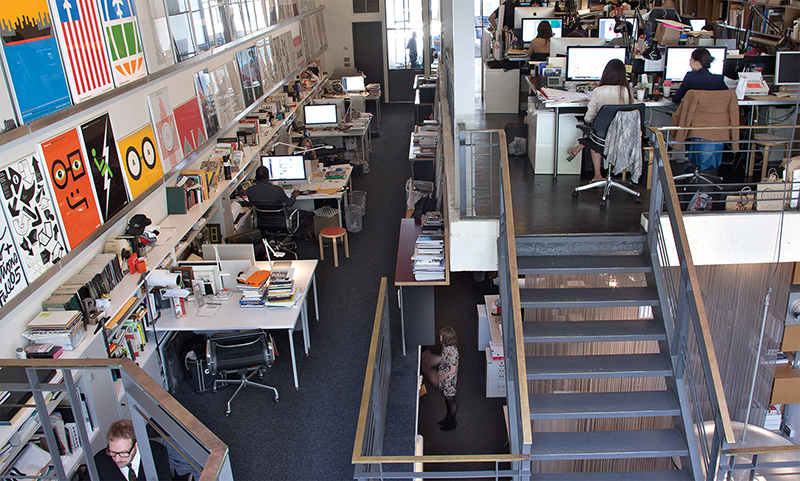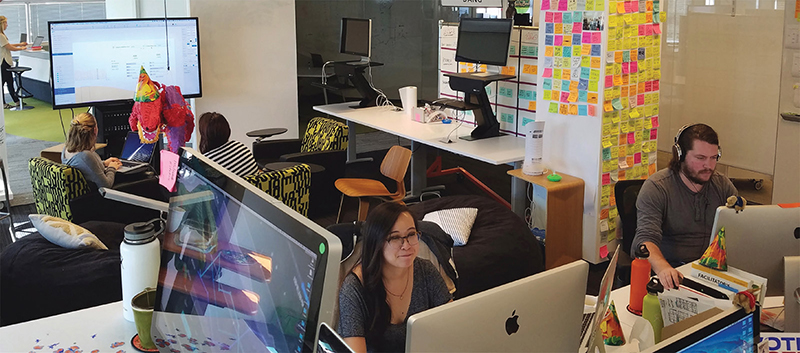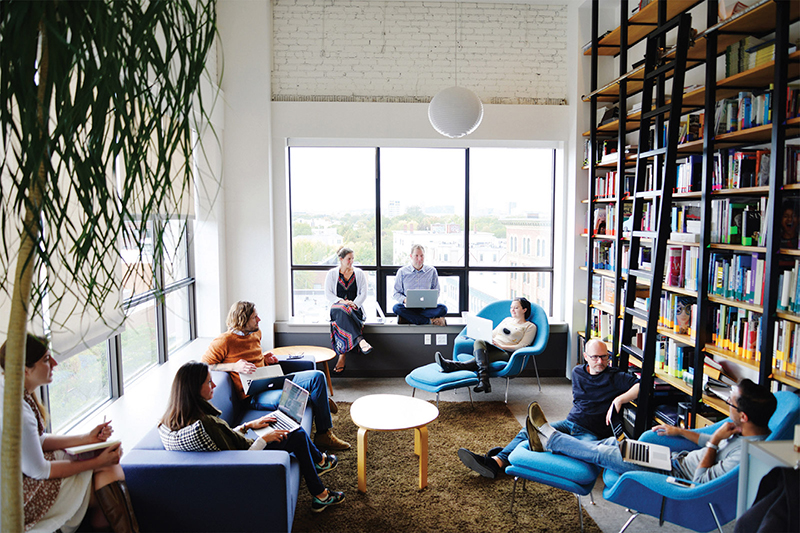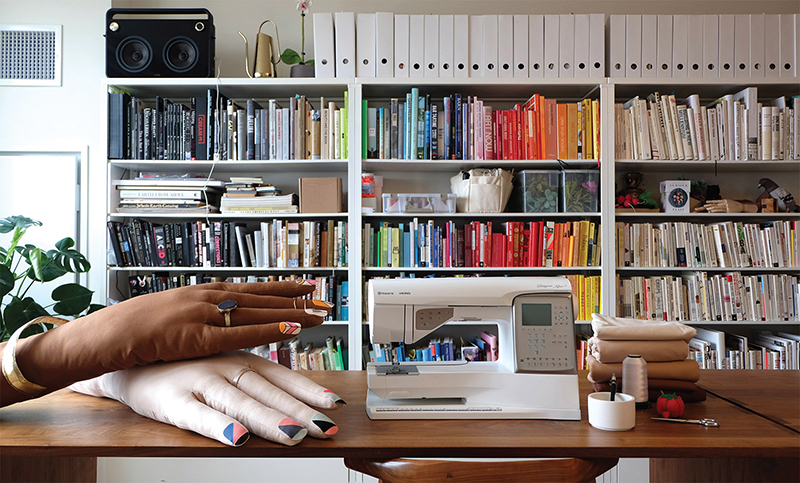
Where we work: Pentagram, New York, New York.
The following text and images are excerpts from a new book, The AIGA Guide to Careers in Graphic and Communication Design (Bloomsbury, 2017). The book highlights contemporary perspectives that can help professionals, students, and educators explore the expanding field of design, navigate its changing trends, and find their place in it. — The Editors
In 1993, designers asked to contribute to the AIGA Career and Education Guide were asked what they saw coming. Mostly they were right. They saw the importance of new and blended media, the trend towards decentralization, and a temporary obsession with tools that would give way to thought processes. They saw a demand for better design, as well as greater literacy and access for non-designers, a shift towards business strategy, and engagement with audiences. All of these shifts are still continuing, even if not exactly in the way they had imagined.
To get a glimpse of the future of graphic and communication design, it’s not enough to think about new hardware, corporate needs, or visual trends. In the short term, digital design will move beyond screens to physical surfaces and augmented or artificial environments, and designers will occupy more positions where they are directing or consulting on larger and more complex systems of experience. Design is already less visual and more collaborative, and will continue along that trend. It’s not enough, though, to look five or ten years in the future. Will there be a Machine-Learning designer in 2050? Maybe. But in forty years, it’s just as likely that jobs will no longer exist, or at least not in a way that we would recognize them.


Where we work: IBM, Austin, Texas.
Work is changing. Companies of all sizes have been rethinking 1950s models of working. While so much of the last twenty years has been about giving women and people of color access to this archaic workplace, the next twenty will be about adapting the workplace itself to accommodate multiple modes of living and working. The ubiquity of information about jobs has made it harder to recruit and retain staff, and public perception of what goes on in the workplace has never mattered more. Where design is integral to a company’s product or service, people look at the size and quality of their design teams to predict their future success. In response, policies and processes for everything from workplace conduct to workplace education to on-site child care are being rethought. Command hierarchies are disappearing in favor of flat organizations. To make it all more confusing, large private companies and consultancies are also adding divisions to address civic issues like social welfare and housing, as well as education and cultural programming that serves people beyond their own workforce.
On the other hand, independent work in all industries is on the rise, spurred on by online platforms that make it easier for contractors to find work and for employees to find contractors. When companies that don’t have design as a core part of their business are in a growth mindset, they hire in-house design teams. When they focus instead on maintaining and not growing their business, they reduce their risk by outsourcing design to individuals, studios, agencies, and consultancies. Even with this shift back, the social and hierarchical changes pushed through in the growth period will remain.

Where we work: Facebook, Menlo Park, California.
Technology will also shape the future designer, though not exactly the way you may think. Advancing communication technology and increased bandwidth have made remote working less cumbersome and project management more efficient. If the bulk of your work and communication is digital, deciding where you work and when you work already has less of a negative impact on your company or team. This lack of tangibility, though, also makes many design positions vulnerable to automation, especially those that are reliant on interpreting data, or strictly bound by rules or processes. For example, fifteen years ago, if a company needed a public-facing website to advertise their product or services, they would have to hire a designer or designer/programmer to create one from scratch. Now, with easily accessible and inexpensive templates, a company needs to hire a designer only if they need more extensive customization or advice on how to integrate with other platforms. Skills that can be automated and templatized become less valuable, while other skills become more valuable.
So how, then, do you prepare for a career when you’re not sure if that job you wanted or that thing you wanted to make is going to exist? You do it by developing the habits that make you a good designer in any context, and making sure that you never stop learning and changing. Be wary of anyone who is selling you a job or a degree with promises that learning a set of hard skills alone, or having a particular word on a résumé, will insure a lifetime of success. Work on getting better at learning something from every position, educational experience, or conversation rather than constantly searching for the best jobs, schools, or mentors.
Be aware of how you limit yourself, or allow yourself to be limited by others. In your own search for identity, it’s easy to confuse what other people say about you, or about your gender, or about your ethnicity, with who you really are or what you are capable of doing. You may be surprised to find that after a lifetime of thinking you can’t do math, that you have a solid grip on how to use and explain technology, precisely because you know how it feels to be nervous about it. You may be a great presenter, even though no one introduced you as a child without a remark on your shyness or awkwardness, in part because you know how to empathize with your audience. If all of your talents were already revealed at twenty, the next fifty years would be unbearable.

Where we work: IDEO, Boston, Massachusets.
Even if you allow yourself to establish your own limits on learning, it’s difficult to ignore the profiles and statistics of work environments. Be cautious about how you use this information, and be as pragmatic as you can about how you make decisions. Avoiding whole sectors or fields will make those environments less diverse, not more. It’s also difficult to ignore what other people will think about what you are doing, especially in comparison to other people who are also starting out. The race isn’t with others, though: it’s with yourself. If you consistently win against yourself, that abstract crowd will cheer for you every time.
Finally, when there are no job titles, when all of the tools have changed, when the role designers play in the larger culture have completely changed, there will be more design problems to solve, not less. Less binary structures in the workplace and increased automation will place greater value on innovative or creative thinking and interpersonal communication. Designers who approach their work with professionalism, determination, and curiosity will solve bigger problems and create new experiences beyond what we can now imagine.

Where we work: home studio, Brooklyn, New York.
